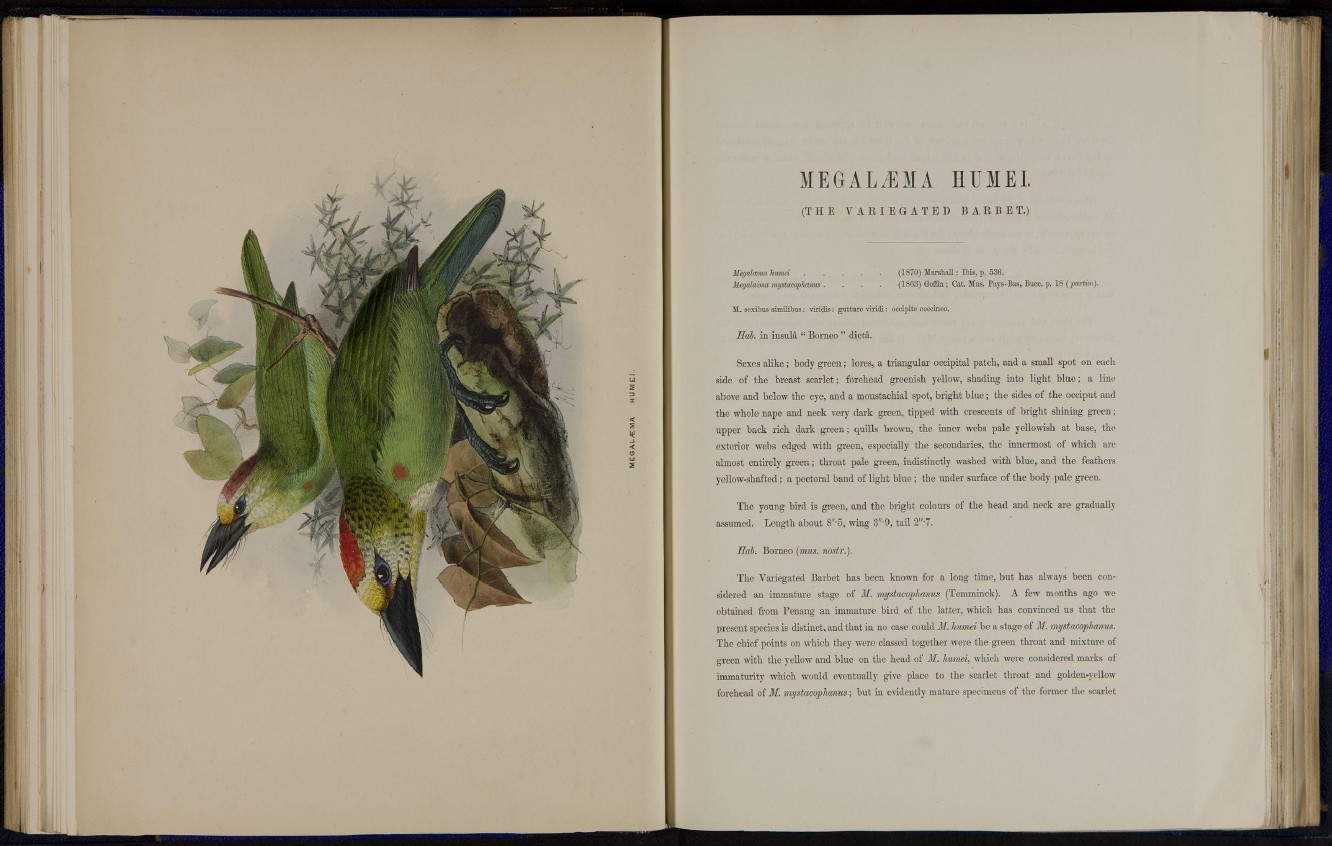
MEGALiEMA HUMEI.
( T H E V A R I E G A T E D B A R B E T .)
Meyalcrma hunui (1870) Marshall; Ibis, p. 536.
Mcyalaima mystucoplianus . . . . (1863) Goffin ; Cat. Mus. Pays-Bas, Bucc. p. 18 (partim).
M. scxibus similibus: viridis : gutture viridi: occipite coccineo.
Hob. in insula " Borneo " dicta.
Sexes a l i k e ; body green; lores, a triangular occipital patch, and a small spot on each
side of the breast scarlet; forehead greenish yellow, shading into light blue; a line
above and below t h e eye, and a moustachial spot, bright b l u e ; the sides of the occiput and
the whole nape and neck very dark green, tipped with crescents of bright shining green;
upper back rich dark green; quills brown, the inner webs pale yellowish at base, the
exterior webs edged with green, especially the secondaries, the innermost of which are
almost entirely green; throat pale green, indistinctly washed with blue, and the feathers
yellow-shafted ; a pectoral band of light blue ; the under surface of the body pale green.
The young bird is green, and the bright colours of the head and neck are gradually
assumed. Length about 8"-5, wing 3"-9, tail 2"-7.
Ilab. Borneo (mus. nostr.).
The Variegated Barbet has been known for a long time, but has always been considered
an immature stage of M. mystucoplianus (Temminck). A few months ago we
obtained from Penang an immature bird of the latter, which has convinced us that the
present species is distinct, and that in no case could M. humei be a stage of M. mystacopli'tnux.
The chief points on which they were classed together were the green throat and mixture of
green with the yellow and blue on the head of M. humei, which were considered marks of
immaturity which would eventually give place to the scarlet throat and golden-yellow
forehead of M. mystacopihanus; but in evidently mature specimens of the former the scarlet